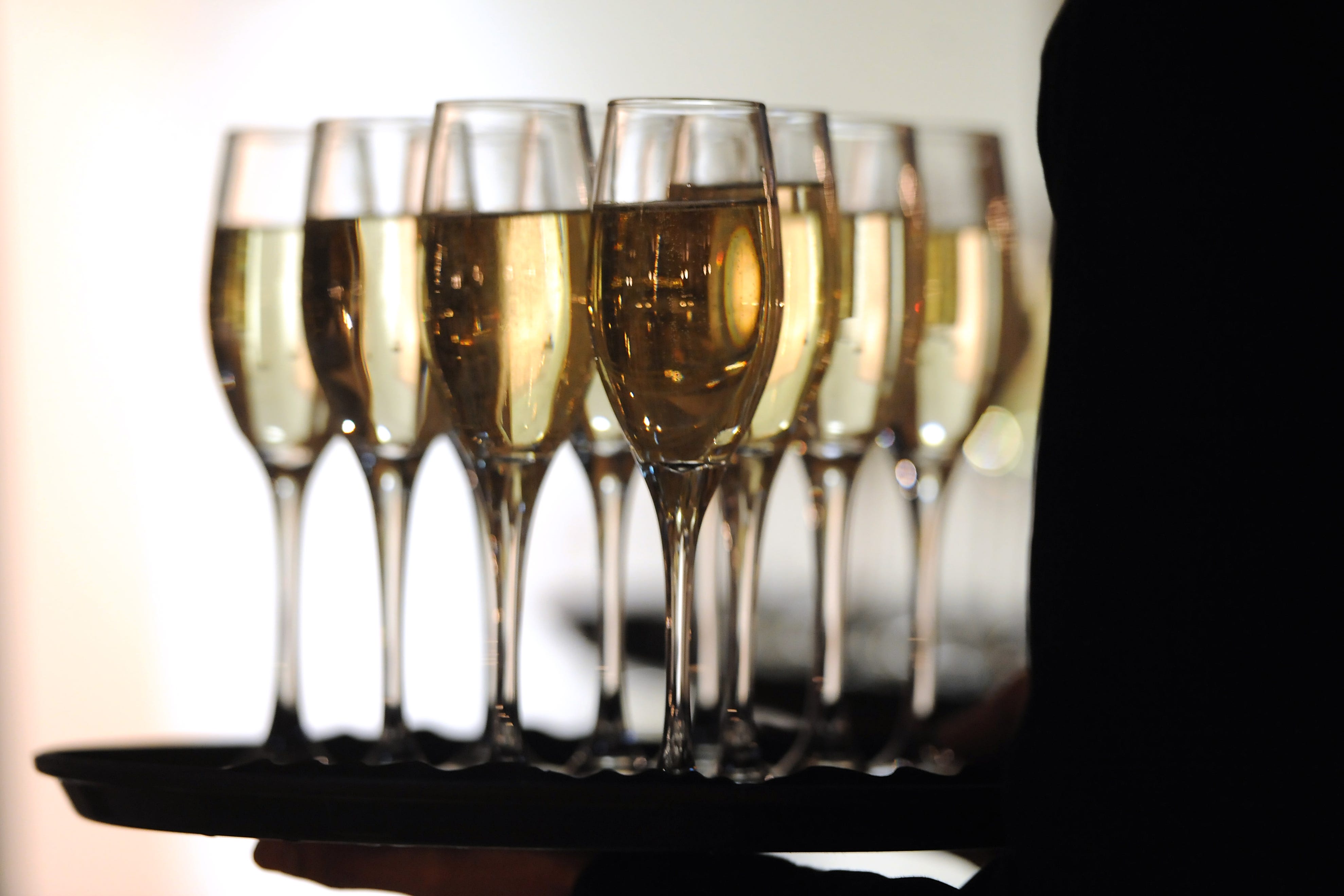Researchers solve mystery of why champagne bubbles rise in straight line
Bubbles in champagne rise up in a straight line unlike other fizzy drinks like beer or soda

Whether you call it a glass of bubbly, bubbles or fizz, champagne is worthy of a toast, and now researchers have discovered why its bubbles rise in the way they do.
Unlike other fizzy drinks like beer or soda, bubbles in champagne go up in a straight line.
The study suggests the stable bubble chains in champagne and other sparkling wines occur due to ingredients that act as soap-like compounds called surfactants.
These surfactant-like molecules help reduce the tensions between the liquid and the gas bubbles, making for a smooth rise to the top, researchers say.
Roberto Zenit, engineering professor at Brown University in America, who was one of the paper’s authors, said: “This is the type of research that I’ve been working out for years.
“Most people have never seen an ocean seep or an aeration tank but most of them have had a soda, a beer or a glass of champagne.
“By talking about champagne and beer, our master plan is to make people understand that fluid mechanics is important in their daily lives.”
When it comes to champagne and sparkling wine the gas bubbles that continuously appear rise quickly to the top in a single file and keep doing so for some time.
This is known as a stable bubble chain.
In other carbonated drinks many bubbles veer off to the side, making it look like multiple bubbles are rising at once, meaning the bubble chain is not stable.
Researchers from Brown University and the University of Toulouse wanted to investigate the stability of bubble chains in carbonated drinks.
The findings are based on a series of experiments, including pouring out glasses of champagne, beer, sparkling water and sparkling wine.
According to the researchers, the results not only explain what gives champagne its line of bubbles but may hold important implications for understanding bubbly flows in the field of fluid mechanics.
Senior author Prof Zenit said: “The theory is that in champagne these contaminants that act as surfactants are the good stuff.
“These protein molecules that give flavour and uniqueness to the liquid are what makes the bubbles chains they produce stable.”
The stability of bubbles is affected by their size, researchers say.
They found that chains with large bubbles have a wake similar to that of bubbles with contaminants, leading to a smooth rise and stable chains.
However, in drinks these bubbles are always small, making surfactants the key ingredient to producing straight and stable chains.
For example, beer also contains surfactant-like molecules but depending on the type of beer, the bubbles may or may not rise in straight chains.
In contrast, bubbles in carbonated water are always unstable as there are no contaminants helping the bubbles move smoothly through flows left behind by the other bubbles in the chain.
Prof Zenit said: “This wake, this velocity disturbance, causes the bubbles to be knocked out.
“Instead of having one line, the bubbles end up going up in more of a cone.”
Researchers say their findings go well beyond understanding the science that goes into celebratory toasts.
The results provide a general framework in fluid mechanics for understanding the formation of clusters in bubbly flows.
For example, technologies that use bubble-induced mixing, like aeration tanks at water treatment facilities, would benefit from researchers having a clearer understanding of how bubbles cluster, their origins and how to predict their appearance.
In nature, understanding these flows may help better explain ocean seeps in which methane and carbon dioxide emerge from the bottom of the ocean.
To observe the bubble chains, the researchers poured glasses of carbonated beverages including Pellegrino sparkling water, Tecate beer, Charles de Cazanove champagne and a Spanish-style brut.
To study the bubble chains and what goes into making them stable, they filled a small container with liquid and inserted a needle at the bottom so they could pump in gas to create different kinds of bubble chains.
The researchers then gradually added surfactants or increased bubble size.
When they made the bubbles larger, they could make unstable bubble chains become stable, even without surfactants, the study found.
And when they kept a fixed bubble size and only added surfactants, they found they could also go from unstable chains to stable ones.
The findings are published in the Physical Review Fluids journal.
Bookmark popover
Removed from bookmarks